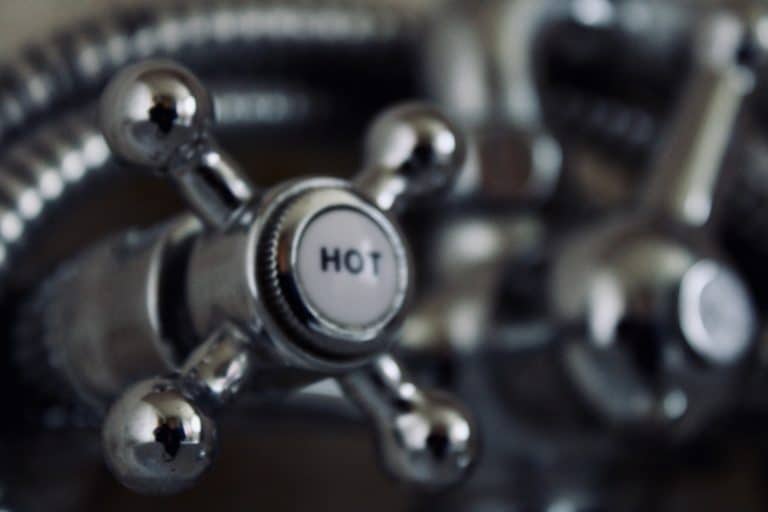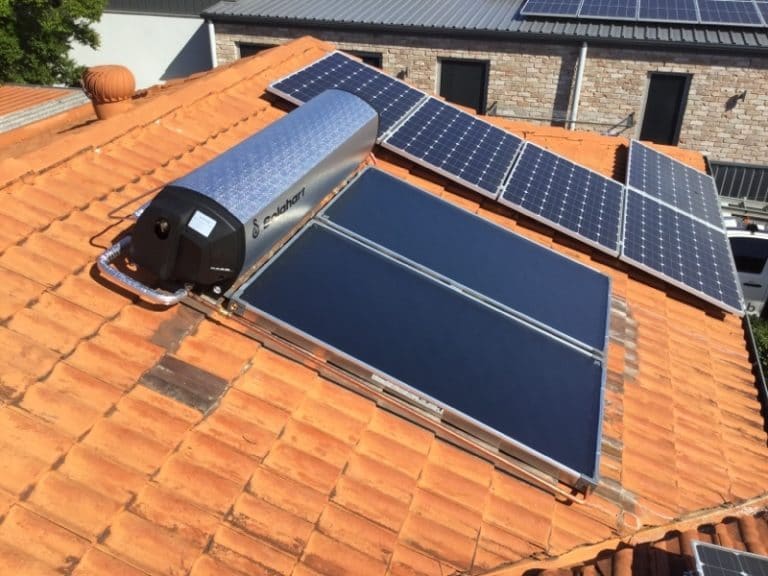Live Energy Consumption in Australia
How Solar Hot Water Systems Work
Solar hot water systems harness the power of the sun to heat water for your household needs. A typical system consists of three main components:
- Solar collectors: These are installed on your roof to absorb solar energy.
- Storage tank: This insulated tank stores the heated water for later use.
- Backup heating system: This ensures a consistent supply of hot water during periods of low sunlight.
There are two main types of solar hot water systems:
- Flat plate collectors: These rectangular boxes have a glass cover and an absorber plate that collects solar energy.
- Evacuated tube collectors: These feature a series of glass tubes that contain a heat-absorbing material.
Systems can be further classified as either split systems, where the storage tank is located on the ground, or on-roof systems, where the tank is placed on the roof alongside the collectors.
Solar Hot Water System Installation
When considering a solar hot water system installation, several factors come into play:
- Location and climate: The amount of sunlight your area receives influences the system’s efficiency.
- Household size and hot water demand: A larger household or higher hot water consumption requires a larger system.
- Available roof space and orientation: Your roof should have sufficient space and exposure to sunlight for optimal performance.
While some homeowners may be tempted to tackle installation themselves, it’s crucial to rely on professional installation to ensure proper sizing, positioning, and setup of your solar hot water system.
Solar Hot Water System Efficiency
The efficiency of your solar hot water system depends on several factors:
| Factor | Description |
|---|---|
| Collector type and size | Larger and more advanced collectors can absorb more solar energy. |
| Insulation and heat loss | Proper insulation minimizes heat loss from the storage tank and pipes. |
| Shading and orientation | Collectors should be positioned to maximize exposure to direct sunlight. |
To maximize your system’s efficiency, consider the following tips:
- Regularly clean your collectors to remove dirt and debris.
- Insulate pipes to reduce heat loss as water travels from the collectors to the storage tank.
- Schedule annual maintenance to identify and address any potential issues.
By optimizing your system’s efficiency, you can significantly reduce your energy bills and enjoy a reliable supply of hot water.
Welcome To Our Live Energy Consumption Tracker
You can monitor the real-time energy usage across Australia. This page provides a detailed breakdown of energy consumption by state and energy type, highlighting the percentage of renewable energy currently powering our nation. Whether you’re a homeowner, business owner, or just curious about Australia’s energy landscape, this page offers a comprehensive look at how our energy is produced and consumed.
Real-Time Energy Consumption by State
Understanding energy usage by state allows you to see how different regions contribute to Australia’s overall energy demand. The live tracker below provides a state-by-state breakdown, showing how much energy is being consumed in each region right now.
- New South Wales
- Victoria
- Queensland
- South Australia
- Western Australia
- Tasmania
- Northern Territory
Each state’s energy consumption is updated in real time, giving you the most accurate and up-to-date information available.
Renewable Energy Usage
As Australia moves towards a more sustainable energy future, it’s important to keep track of how much of our energy is coming from renewable sources. This section of the tracker highlights the percentage of renewable energy currently powering the nation. You’ll see how much of our energy comes from solar, wind, hydro, and other renewable sources.
Why Track Energy Usage?
Monitoring energy consumption and production is crucial for several reasons:
Environmental Impact: Understanding how much energy we consume and where it comes from helps us gauge our environmental footprint and make informed decisions about reducing carbon emissions.
Energy Security: By tracking energy usage, we can identify trends and potential risks in energy supply, helping to ensure that all Australians have reliable access to electricity.
Renewable Transition: Seeing the percentage of renewable energy in real-time encourages both individuals and businesses to consider renewable energy options, contributing to Australia’s transition to a more sustainable energy system.
How You Can Make a Difference
Every individual can contribute to a more sustainable future. Here are a few ways you can reduce your energy consumption and support renewable energy:
Install Solar Panels: Generate your own renewable energy by installing solar panels on your home or business. It’s a great way to reduce your carbon footprint and save on energy bills.
Upgrade to Energy-Efficient Appliances: Use appliances with high energy ratings to reduce electricity consumption and lower your energy costs.
Participate in Green Energy Programs: Many energy providers offer green energy plans that allow you to support renewable energy projects.
Stay Informed and Involved
Australia’s energy landscape is changing rapidly, and staying informed is the first step to making a positive impact. Bookmark this page and check back often to see how energy consumption and production are evolving across the country. Together, we can work towards a cleaner, greener, and more sustainable future.
Our Credentials





Popular Articles

Tips to Extend the Life of Your Solar Hot Water System
Solar-powered hot water systems are an excellent way to reduce your carbon footprint. They also provide a free source of energy for your home, so

Installing a Solar Hot Water System can help save the Planet
A solar hot water system is in fact, a solar energy system which makes use of solar energy efficiently to heat your domestic hot water.

Is Solar Hot Water Worth It In Winter?
Solar hot water is becoming more and more popular as more people want to save money on energy bills while also helping the environment. But

